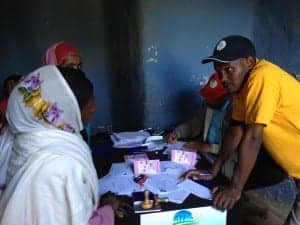Youth Savings Specialist Ryan Newton guest blogged for Youth Economic Opportunities to share Women’s World Banking’s experience in designing financial education programs specifically for youth.
While there is industry consensus that financial capability services are necessary, the jury is still out on the most effective mix of format, content and delivery and how to make it sustainable. At Women’s World Banking, we address these questions in all of our youth savings work and propose new thinking around financial capability services.
Why financial capability services are important
Women’s World Banking’s approach to youth savings program design always includes integrated and complementary financial capability services, which benefit both the client and the financial institution, in that:
- Financially capable clients have the necessary knowledge and skills about why and how to save in a formal financial institution
- Financially capable clients are potentially better customers, which in turn strengthens the business case for youth savings for the financial institution
Beyond financial behavior, research suggests that increasing youth’s financial capability could have broader developmental impact, including increased educational retention, delayed marriage and childbirth, and higher wages.
Our approach

Women’s World Banking is moving away from financial capability services that focus only on stand-alone classroom sessions to more integrated and dynamic services that meet clients at various touch points along their customer journey. This shift is driven primarily by insights from behavioral economics and emerging empirical evidence, and also from our own experience implementing different financial capability approaches in Mongolia with XacBank, in the Dominican Republic with Banco ADOPEM, in Ethiopia with PEACE MFI S.CO, and now in Nigeria with Diamond Bank and in India with SEWA Bank (both for adult and youth savings).
Underlying all of our program design decisions is our belief that financial capability services should not only provide the knowledge and opportunity to act; but also the support to take positive action, and then the motivation to continue using an account and creating habits that establish long-term behavioral change. Our approach also takes into consideration lessons learned from our network member financial institutions about long-term sustainability, so that what is designed is not only the most effective approach to youth savings, but one that can be sustained by the financial institution and its partners, if applicable.
The future of financial capability services
So from what we have learned, what should the future of financial capability services look like? Not what it looks like now.
Format and content
We need to see positive and sustained financial behavioral change. This will only happen if youth feel informed, motivated, and ultimately comfortable opening and using the account and if they stay engaged over time. Financial capability services have to be more than just stand-alone classroom session(s), but include integrated, practical financial education messages and proactive initiatives that promote uptake and long-term usage of savings products. This targeted, “touch point” approach needs to happen before account opening, during account opening, and throughoutthe client relationship.
An example of innovative experimental tactics is sending motivating text messages to account-holders around the holidays, which would likely encourage them to save more than receiving theoretical information about the importance of saving in a classroom setting before an account is even opened. Or a social marketing campaign with educational savings messages and a direct call-to-action would likely have more impact than a traditional lesson on savings.
Sustainability
The most expertly-designed and effective financial capability services will not mean anything if no one can deliver or pay for them. Who should deliver financial capability services (ex. Unified, parallel, or linked) models and how they will be financed are key considerations for sustainability of the services.
For example, in Mongolia, our network member financial institution, XacBank, evolved from a linked to a parallel model for financial capability service delivery for its “Aspire” youth savings program, given the rising costs of the partnership in the linked model, the difficulties in monitoring quality over time, and low conversion rates. The bank now assumes the costs of the financial capability services as part of the broader youth savings program costs.
The landscape of financial capability services is changing, but we still need to figure out the right mix. That will take Women’s World Banking, along with the rest of the industry, to try new things, learn from mistakes, and rigorously measure impact, so that we continue building a body of evidence of what works and is most sustainable.
Also read the post on the Youth Economic Opportunities blog.



